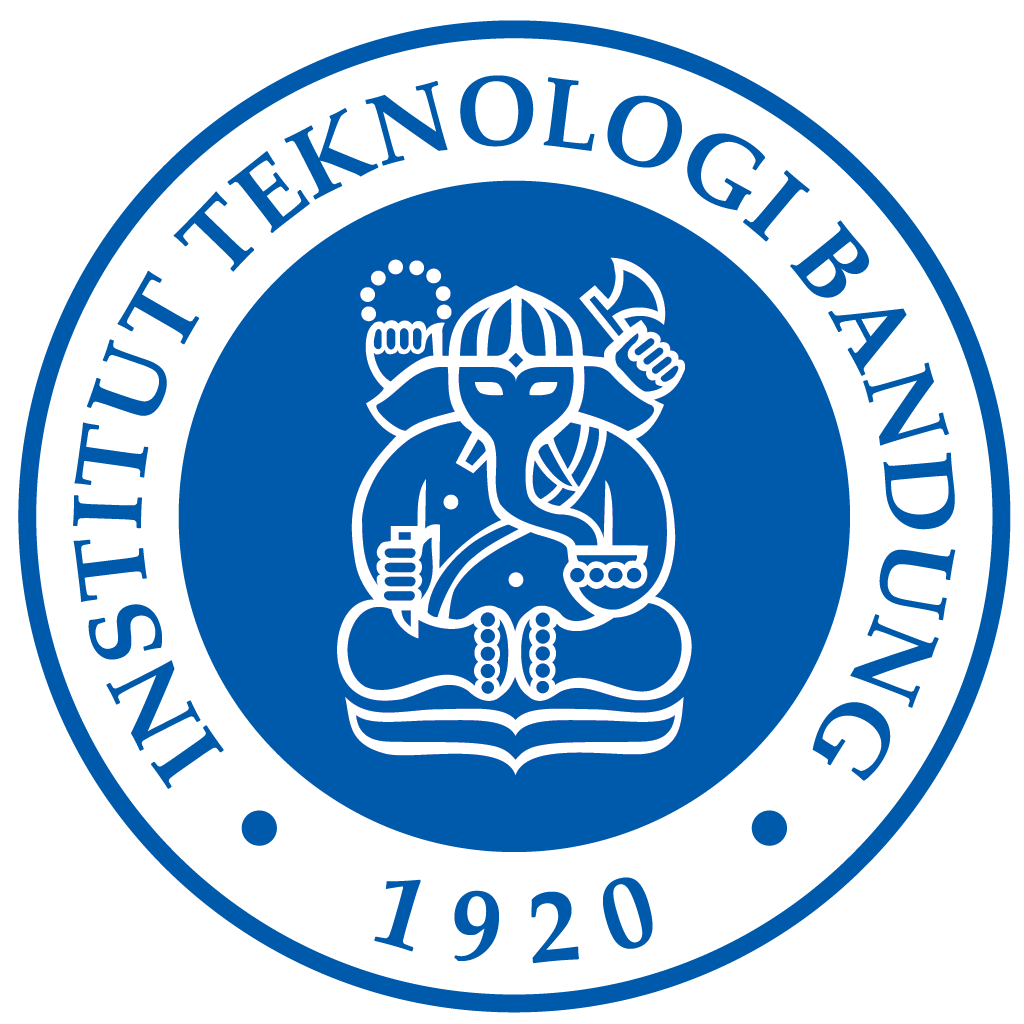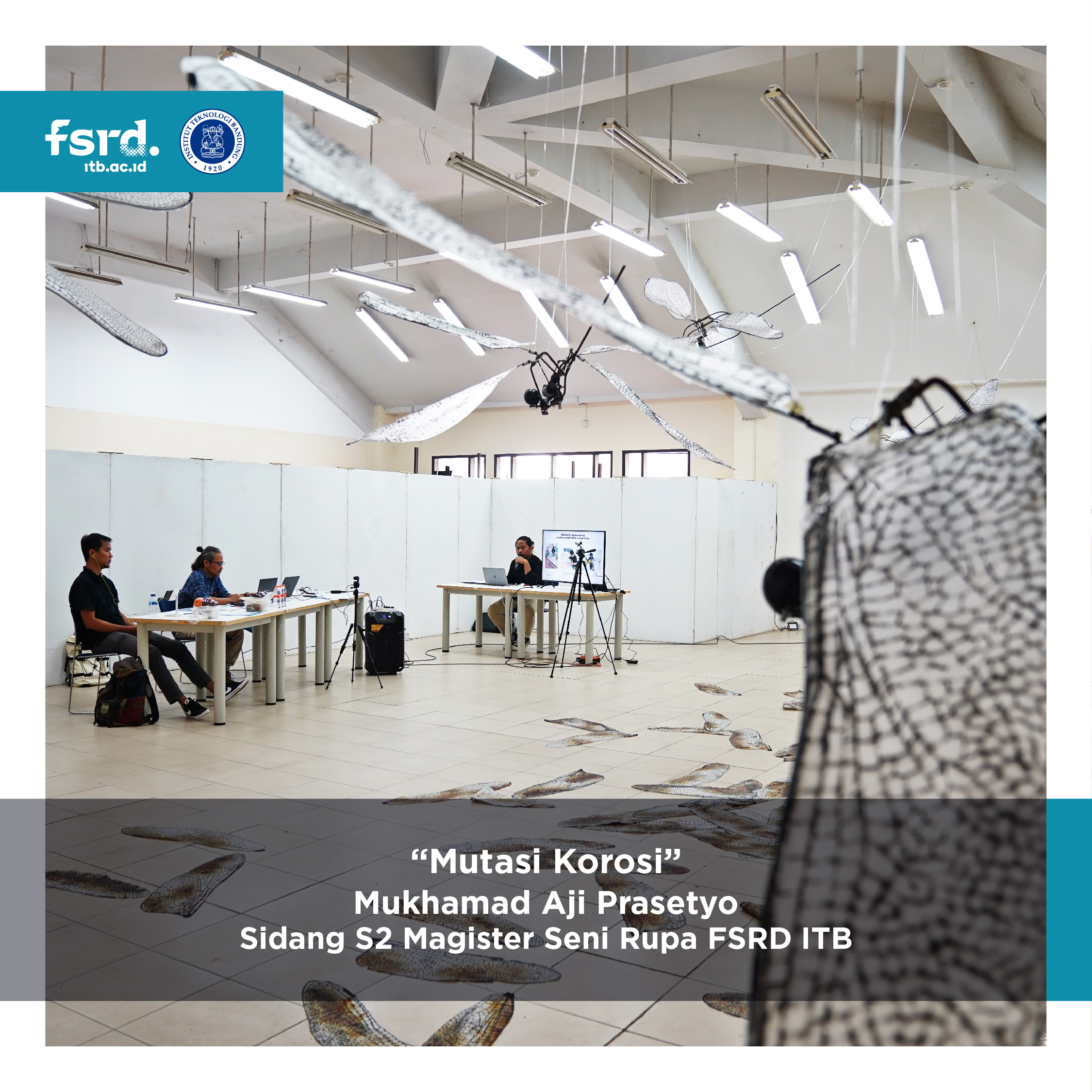“Mutation Corrosion”, A Work from Muhammad Aji Prasetyo
On Tuesday, July 4, 2023, Mukhamad Aji Prasetyo did his thesis defense with his work entitled “Mutasi Korosi” at the Master of Art Studio, FSRD ITB. On this occasion, his first advisor, Dr. Andryanto Rikrik Kusmara, S.Sn., M.Sn., his second advisor, Dr. Budi Adi Nugroho, S.Sn., M.Sn., the examiner, Dikdik Sayahdikumullah, M.Sn., Ph.D., and the reader Dr. Nurdian Ichsan, S.Sn., M.Sn. came to discuss his work.
Mukhamad Aji Prasetyo chose “Mutasi Korosi” as the title of his work based on the changes in the environment caused by pollution which affects the existence of the living things in it. In a river ecosystem, all living organisms are always interdependent. A dragonfly is one of the creatures that has been painted. The dragonfly ecosystem in the river is disturbed by the pollution of river waste. Now the existence of dragonflies which is a marker of a clean water environment (bioindicator) is increasingly disappearing from their habitat. This work takes the form of a kinetic installation and various dimensions. Corrosion mutations take the form of 8 dragonflies that are suspended and integrated with a motion sensor and visual corrosion of iron on cast plastic and 100 fallen dragonfly wings.
Mukhamad Aji Prasetyo explained that this work provides a means to reflect on changes in nature. Aji froze his experience when he realized the changes in his hometown over the decades. When he returned home to Jombang last year, he could not find the jewel damselfly population that was familiar in his childhood memories. Jewel damselfly (Rhinocypha fenestrata) is a small dragonfly with shiny colors that is a predator for small pests of rice plants. In an ecosystem, dragonflies are also natural bioindicators to determine the cleanliness of water because their larvae cannot grow in polluted water. Sure enough, later he learned that the irrigation in the rice fields had been contaminated with factory waste that had not been treated wisely.
“Mutasi Korosi” reflects the natural essence of nonduality in its material context. This work also satirically raises the concept of genetic change and evolution. However, in its abstract aspect, this work invites us to do deeper introspection on our own thoughts. The mind is also part of the universe, but similar to the anthropocentric view influenced by colonialism that manipulates humans with fictitious values and perceptions. This work is an experiment in challenging these latent tendencies through the aesthetic dimension.
Mukhamad Aji Prasetyo said that in making his work, he learned together with lecturers and friends from different multidisciplinary backgrounds since his work uses media from various materials such as electronics, paper, and iron, and it uses graphic techniques and installations that require various perspectives. He also encountered some failures in trying to use the media such as Arduino programming and sensory installation. It is expected that the creation of this work can become materials for study, discussion, or criticism. It can also enrich the repertoire of installation art in art education.
“Through this installation art, I hope art appreciators will give positive appreciation and open up mutual awareness of a work of art with the theme of art and ecology as a reflection or lesson in social, economic, political and cultural life in society,” said Mukhamad Aji Prasetyo.


